The third-highest capital in Europe is walled to the south by the 2,300m massif of Vitosha mountain.
Sofia became the capital of Bulgaria in 1878 when the Russo-Turkish War closed the book on centuries of Ottoman rule.
It’s a city of neo-Byzantine cathedrals and monumental Socialist architecture, but also ample green space, especially in the southern districts.
Keen historians will find exciting pieces of early-Christian heritage with layers of Medieval frescoes uncovered after liberation from the Ottomans.
Sofia’s museums show off the 2,500-year-old treasures of Ancient Thrace, while former Ottoman mosques are now occupied by Bulgarian institutions like the National Archaeological Museum.
1. Alexander Nevsky Cathedral
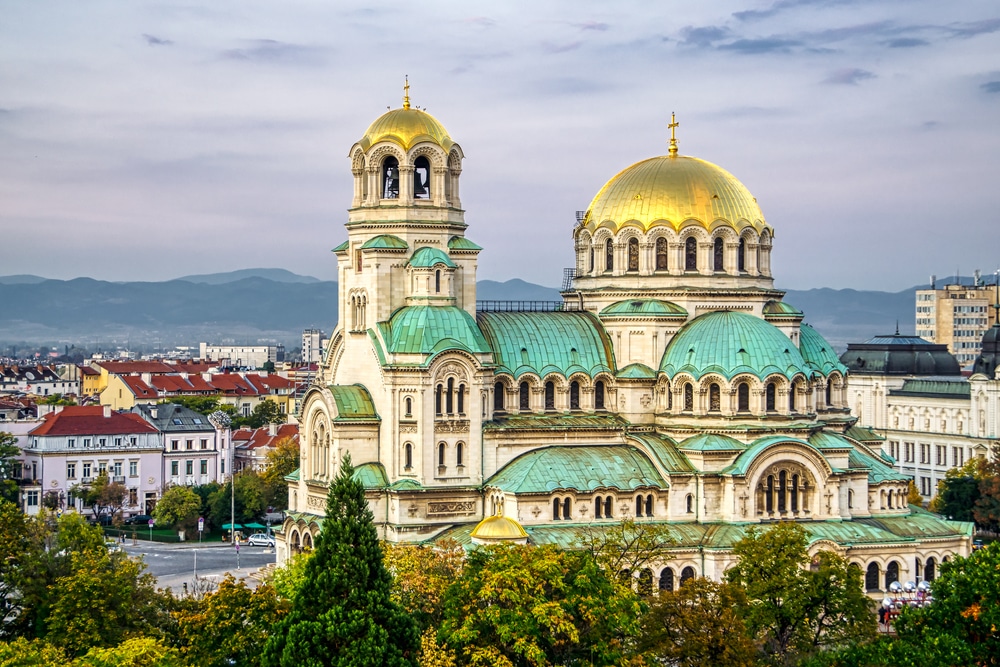 Source: Anton Donev / shutterstock
Source: Anton Donev / shutterstockA glittering symbol for Sofia, this neo-Byzantine Orthodox cathedral is among the 50 largest Christian places of worship in the world.
The Alexander Nevsky Cathedral took shape between 1882 and 1912, and is dedicated to the Russian victims of the Russo-Turksh War (1877-1878), which helped Bulgaria gain its independence.
Some 5,000 worshippers can fit inside, and the main gold-plated dome climbs to 45 metres over the surrounding square, also named for the 13th-century Russian saint, Alexander Nevsky.
Go in to gaze in wonder at the interior, rich with Italian marble in many different tones, as well as alabaster and Brazilian onyx.
Artisans all over central Europe contributed, with metalwork from Berlin, light fixtures from Munich, mosaics from Venice and the majestic gates crafted in Vienna.
Next to the altar is a case containing the relics of Alexander Nevsky, and there’s a museum in the building run by Bulgarian National Art Gallery.
This presents what is claimed to be the largest collection of Orthodox icons in Europe.
Website: https://www.cathedral.bg/
2. Vitosha Mountain
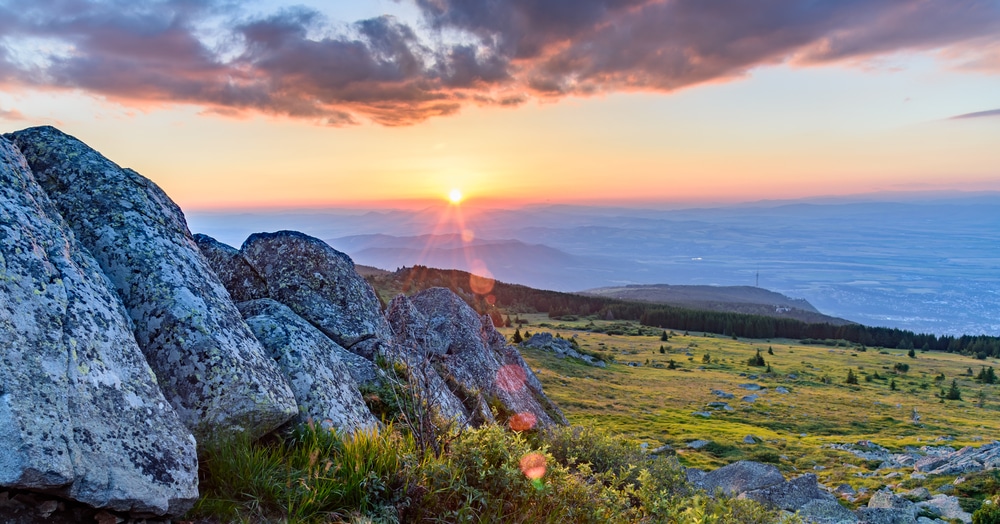 Source: Todor N Nikolov / shutterstock
Source: Todor N Nikolov / shutterstockSofia just wouldn’t be the same without this epic massif presiding over the south of the city.
Almost 20 kilometres long and rising to 2,292 metres (1,275m over the city), Vitosha Mountain injects some majesty into Sofia’s skyline.
But, at just 15km from the city centre, it’s also a genuine option for an active day out.
In winter the upper slopes are blanketed with snow, and in spring and autumn conditions are ideal for hikes to beauty spots like the Boyana Waterfall.
At high elevations, trails wend their way along slopes dense with coniferous forest of Norway spruce, Scots pine, Bulgarian fir and Macedonian pine.
A less demanding way to scale the slopes is “lift Simeonovo”, a gondola lift system taking you from just next to Sofia’s ring road to Aleko, which is the resort village in winter.
From there you can strike out for the peak of the massif, Cherni Vruh (Black Peak) for a five-hour round hike.
Website: https://park-vitosha.org/
3. Church of St George Rotunda
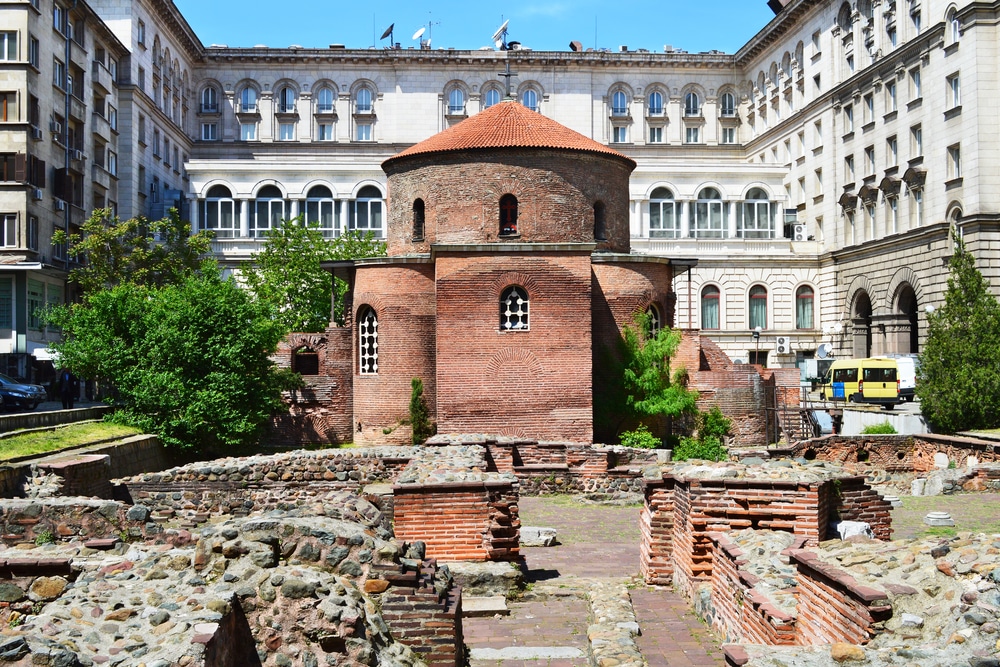 Source: Dimitrina Lavchieva / shutterstock
Source: Dimitrina Lavchieva / shutterstockThe oldest building in Sofia has been here in some form since the 4th century, when it was built as a Roman bath.
The cylindrical structure, set on a square base and crowned with a dome, was later adapted as a church.
You’ll find it in an archaeological park in a courtyard enclosed by the presidency, government offices and a luxury hotel at the west end.
The Church of St George Rotunda is composed of red bricks and in the 20th century several layers of frescoes were discovered on the dome’s interior.
These had been covered up during the Ottoman period when the building became a mosque, and were painted between the 6th century and the 14th century.
You can also spend a little time exploring the Roman ruins outside, set slightly below the modern street level and made up of hypocaust flooring, pillars and street paving.
Website: http://www.svgeorgi-rotonda.com/
4. National Archaeological Museum
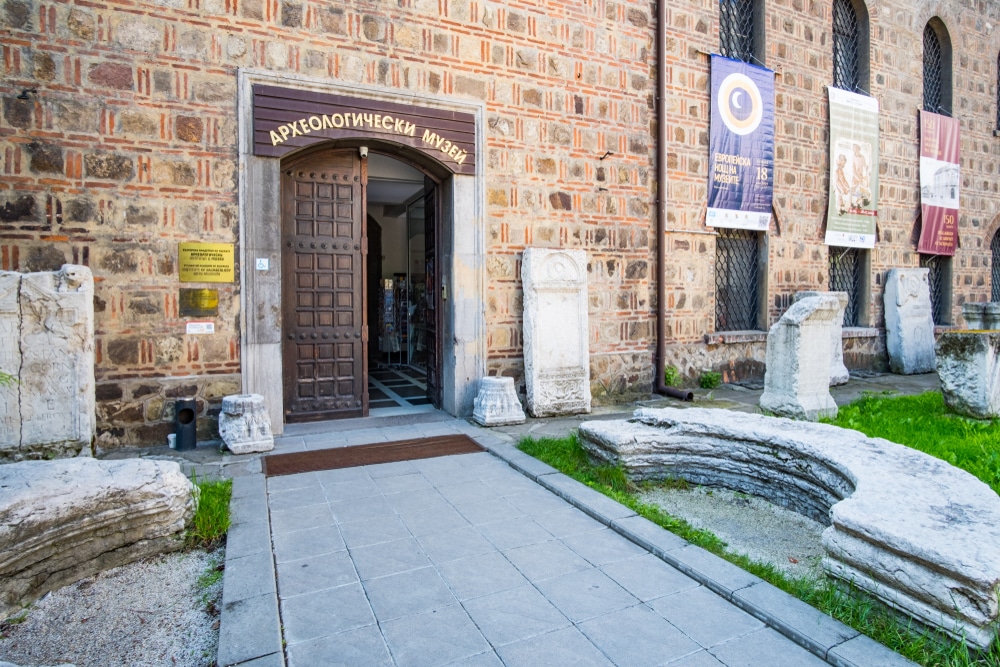 Source: LandEscapeArt / shutterstock
Source: LandEscapeArt / shutterstockThe core of this riveting archaeology museum is under the domes of the oldest and largest mosques in Ottoman Sofia.
The old mosque was raised in the second half of the 15th century, and following liberation spent a few years as the National Library, before the National Archaeological Museum officially opened here in 1905. What you get is a comprehensive summary of Bulgaria’s past.
The earliest items in the Prehistory Hall go back to 1,600,000 BCE, in a display divided into Palaeolithic, Neolithic, Chalcolithic and Bronze Age.
At the Vault you can peruse the museum’s showpiece, the marvellous Valchitran and Lukovit Thracian Treasures, while the Main Hall has a wealth of pieces from Thrace, Ancient Greece and Rome.
Head upstairs and you’ll be in the Medieval Section, abounding with architectural fragments, preserved church frescoes, metal tools, intricate fashion ornaments, early Cyrillic inscriptions and much more.
Website: http://naim.bg/
5. St Sophia Church
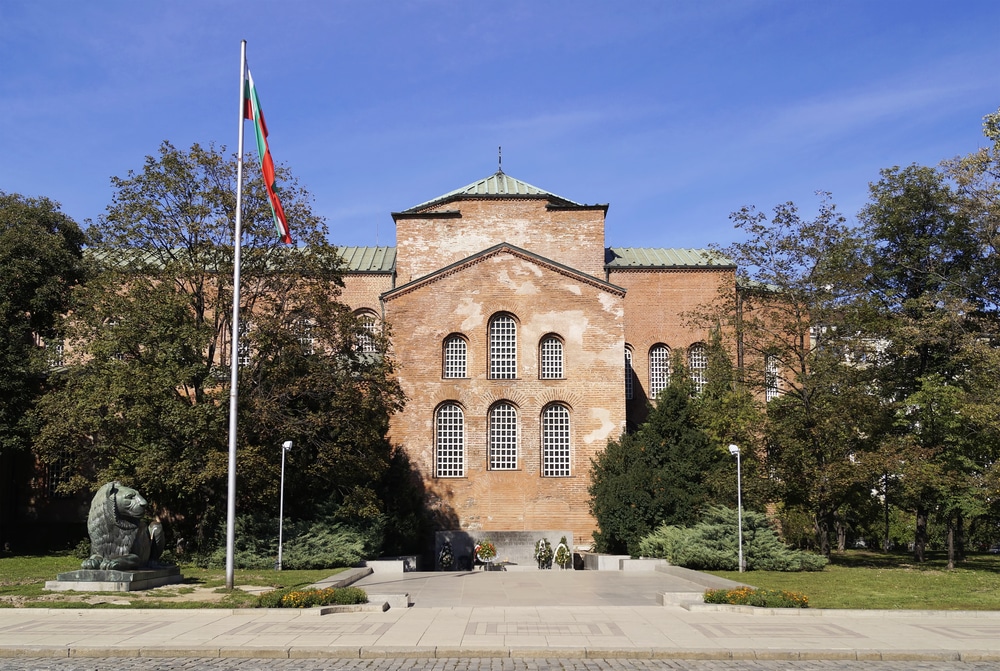 Source: Mile Atanasov / shutterstock
Source: Mile Atanasov / shutterstockRight on Alexander Nevsky Square, next door to the cathedral, is the oldest place of worship in Sofia and one of the most valuable pieces of early-Christian architecture in the Balkans.
In a simple early-Byzantine style, St Sophia is a brick-built cross basilica with three altars, first constructed around the middle of the 6th century BCE.
It is thought to be the latest in a succession of early churches on the site, and the foundations of the predecessors were discovered at the turn of the century.
This spot would have held great meaning for the Roman town of Serdica: The vestiges of a 2nd-century theatre have been unearthed close by, but there’s also a high concentration of tombs, indicating that the church is on the town’s necropolis.
Be sure to inspect the mosaics on the church’s floor, with early-Christian motifs of animals and plants.
Website: https://www.pravmladeji.org/svsofia/index.html
6. National Museum of History
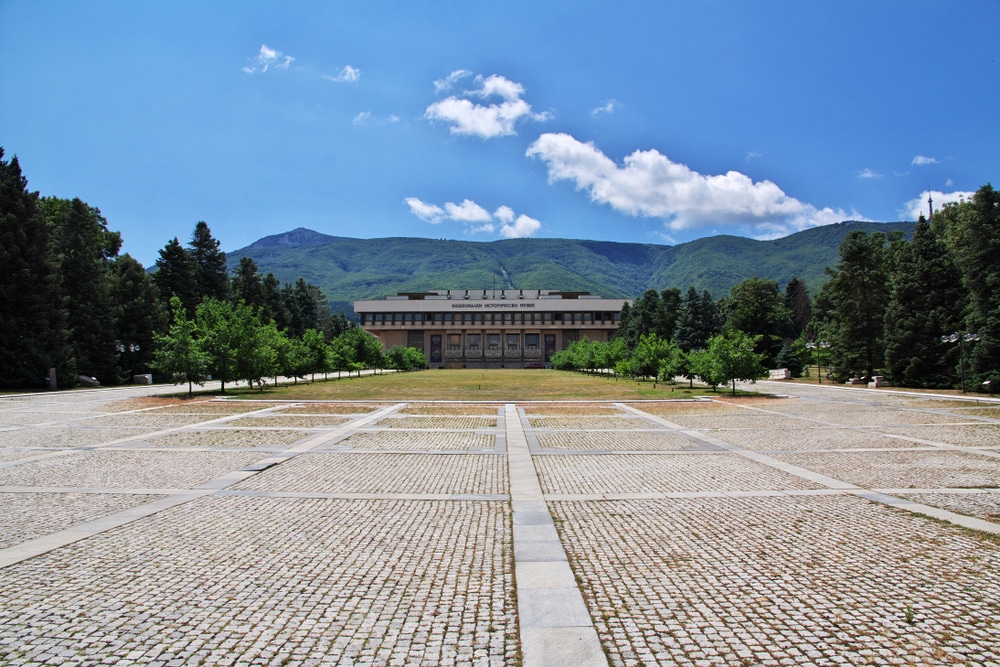 Source: Sergey-73 / shutterstock
Source: Sergey-73 / shutterstockThe largest museum in Bulgaria is in Boyana at the former residence of Todor Zhivkov (1911-1998), communist leader from 1956 to 1989. The setting is both symbolically and visually striking, with Vitosha Mountain soaring behind the palace and its grounds.
The museum’s collections are gigantic, encompassing archaeology, fine arts, history and ethnography.
Only around 10% of these 650,000 objects can be displayed at once.
As with the Archaeological Museum, the exhibits that conjure the most fascination are the Thracian hoards.
Here the Valchitran, Debene, Rogozen and Panagyurishte Treasures comprise armour, edge weapons, goblets, jewellery, pitchers, dated mostly to the 4th and 5th centuries BCE.
The level of workmanship and quantity of precious metals in these displays are jaw-dropping.
There’s tons more to get through, whether you’re intrigued by weapons, furniture, religious art, textiles, fine art, the Bulgarian National Revival, costume/fashion or Bulgarian folk culture.
Website: https://historymuseum.org/
7. Vitosha Boulevard
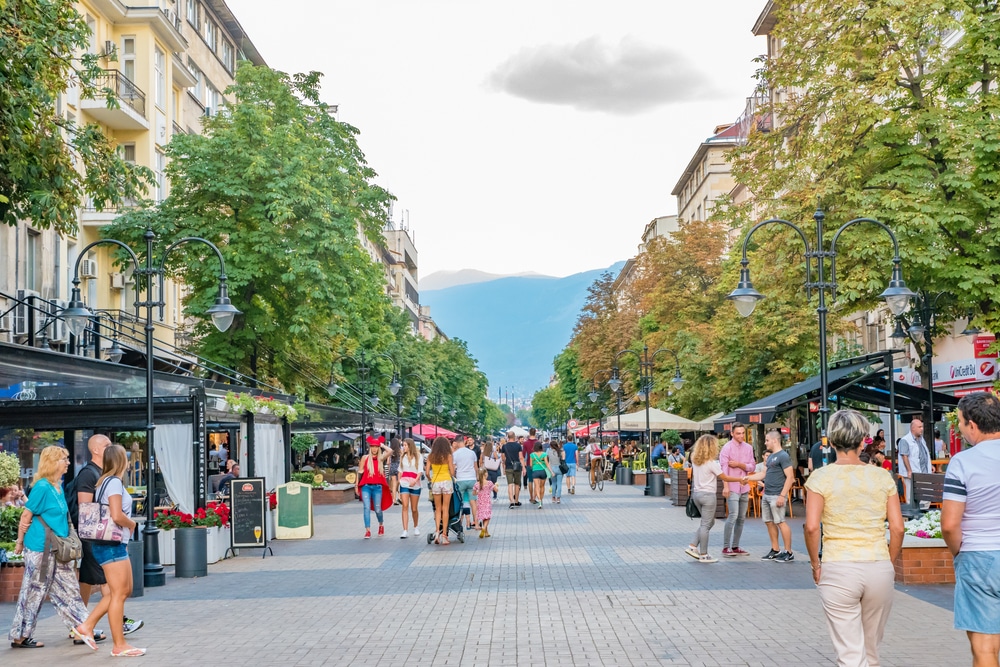 Source: Takashi Images / shutterstock
Source: Takashi Images / shutterstockSofia has a commercial street to rival the best, running for 2.7 kilometres from St Kyriaki Cathedral Church down to South Park.
Maybe Vitosha Boulevard’s greatest asset is the vista south to the namesake mountain, always visible through the urban canyon.
This street passes by many of Sofia’s biggest landmarks, like the gargantuan National Palace of Culture, the Court of Justice and the home of cherished poet Peyo Yavorovv.
Much of the boulevard is pedestrianised, and flanked with boutiques for upmarket brands like Boss, Lacoste and Versace, as well as restaurants and cafes under the shade of trees.
The streetscape has also been spruced up a few times in recent decades, and now has abundant seating, cute Art Nouveau-style kiosks, fountains and flowerbeds.
8. Boyana Church Museum
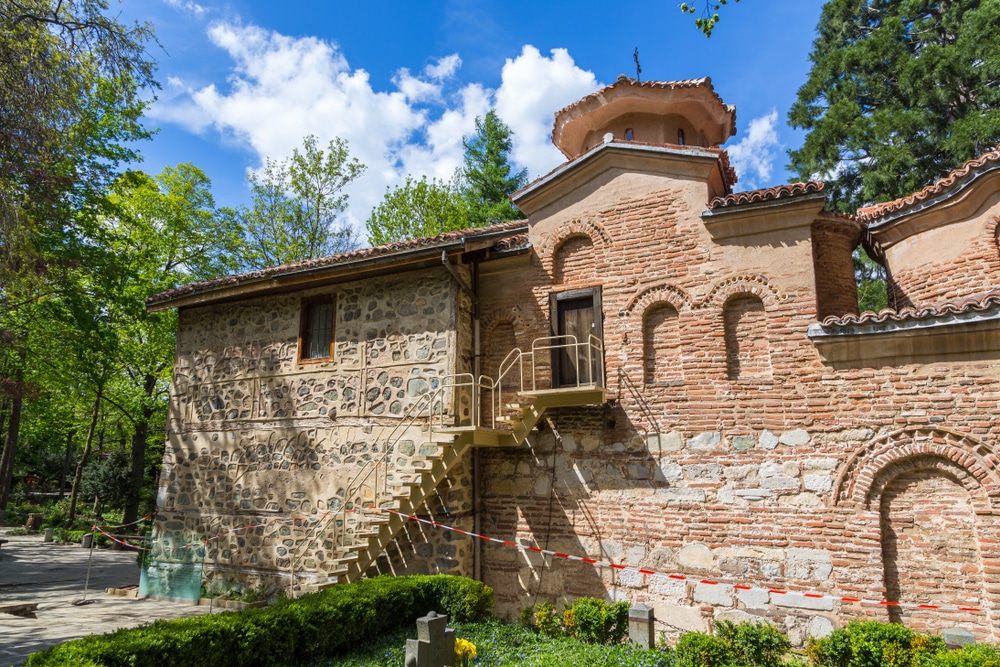 Source: Tomasz Wozniak / shutterstock
Source: Tomasz Wozniak / shutterstockAdored for its Medieval frescoes, this UNESCO-listed church south of Sofia is preserved as a branch of the National History Museum.
The building is made up of three parts, completed at the turn of the 11th century, then in the mid-13th century and finally in the mid-19th century.
These all contribute to a harmonious whole, and the interior is a giant canvas for those Medieval frescoes.
In all there are 89 scenes, and 240 human images, and they follow the Christian canon for mural painting, with an image of Christ Pantocrator in the apse ceiling and the four Evangelists in the drum below.
Most of the images are from a second layer, produced in 1259. You can also make out fragments of an earlier layer from the 11th or 12th century, as well as murals from the 14th, 16th, 17th and 19th centuries.
Website: https://historymuseum.org/en/filial/bojanska-cyrkva/
9. Central Market Hall
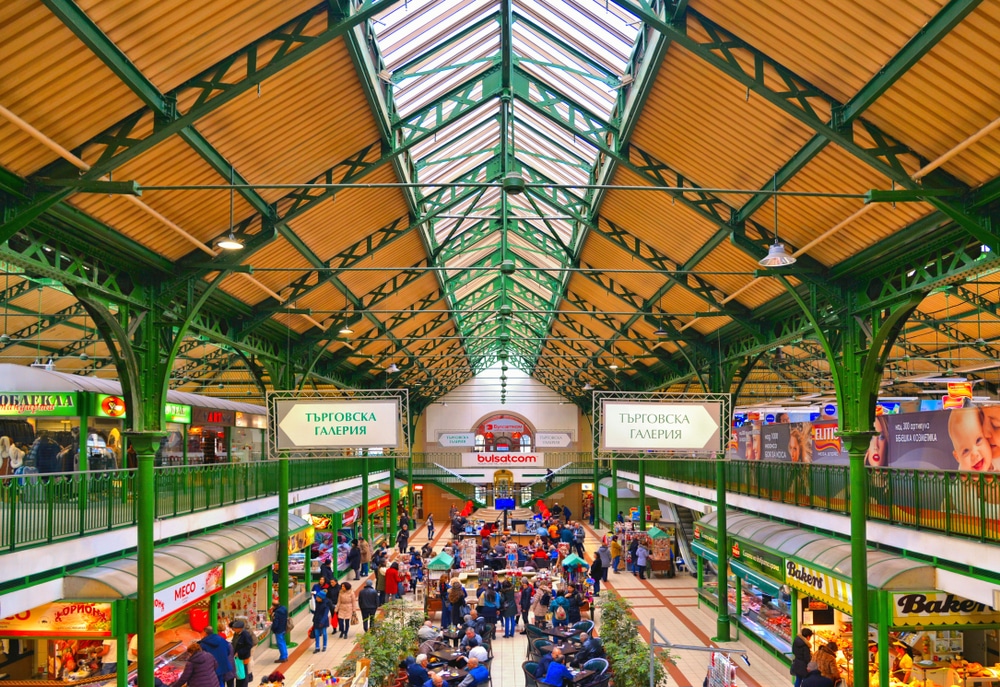 Source: poludziber / shutterstock
Source: poludziber / shutterstockOpposite the Banya Bashi Mosque in the historic heart of the city is Sofia’s main covered market.
This is a sight to check out as much for its architecture as anything else.
It’s a 3,200-square-metre structure, designed in a Historicist style by Naum Torbov (1880-1952) and opened in 1911. The Central Market Hall blends elements of Byzantine, Renaissance and Baroque architecture, and in the tympanum over the main entrance is a relief sporting Sofia’s coat of arms.
Above that is the hall’s iconic clock tower.
Inside, stalls for fresh produce, nuts, olives, bread, pastries, cheese, sweets, oils, meat and fish make up the ground level, while the upper floor trades in clothes, jewellery, accessories and leather goods.
Take a moment to see the basement too, as excavations have exposed some ruins from Roman Serdica.
10. Borisova Gradina
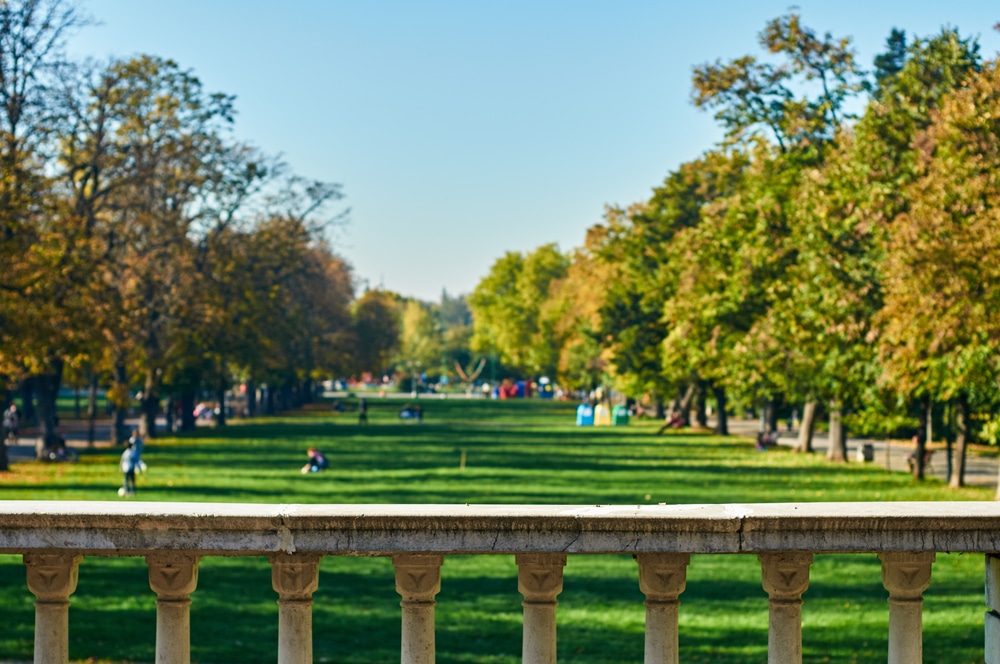 Source: Denys Kurbatov / shutterstock
Source: Denys Kurbatov / shutterstockThe oldest and best-loved park in Sofia was first laid out in the 1880s and later named for Tsar Boris III (1894-1943). Borisova Gradina takes up a large tranche in the south-east of the city, covering more than 300 hectares.
What began as a relatively small garden, designed by Swiss landscape architect Daniel Neff, gradually expanded over time to today’s medley of formal gardens, oak woodland, stately linden and chestnut alleys, water features and sports facilities.
There’s a skating rink here in winter, and an open-air pool popular in summertime.
And hiding among the foliage are some real curiosities to seek out, like a fairytale wooden house carved by the hand of the self-taught Racho Angelov and the Sofia University Astronomical Observatory, open to the public on specific dates.
Website: https://sofia.bg/borissova
11. Sofia Synagogue
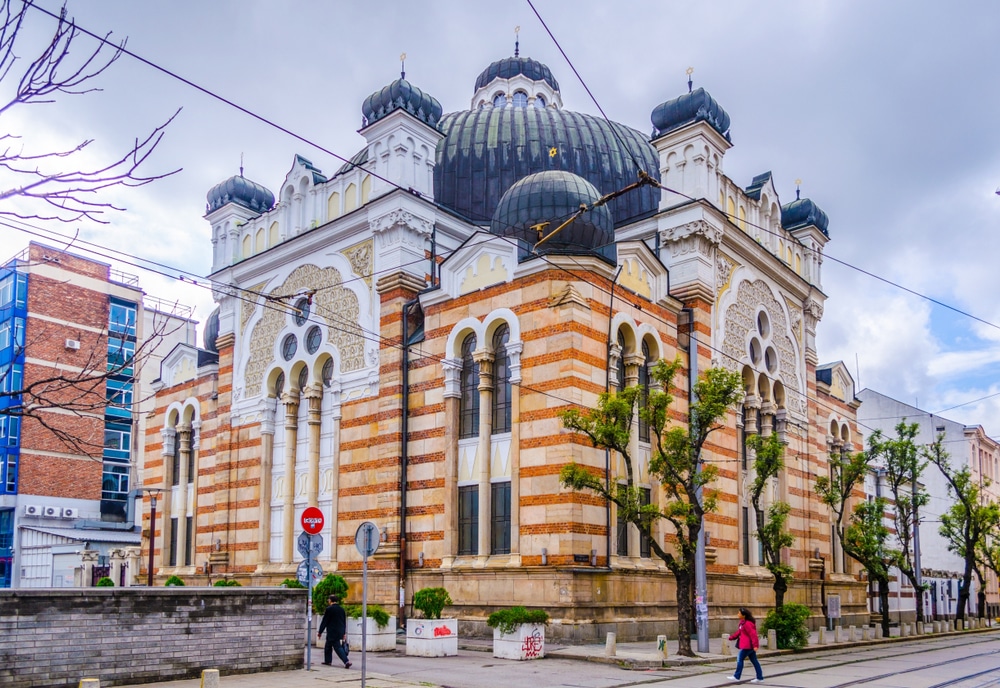 Source: trabantos / shutterstock
Source: trabantos / shutterstockSofia is home to the largest synagogue in south-eastern Europe and one of the three largest in Europe.
This building was designed in a Moorish Revival style by Austrian architect Friedrich Grünanger and completed in 1909 for the city’s mainly Sephardic community.
Still a working place of worship, it is a monument of real scale and beauty, able to hold 1,300 worshippers and enriched with Carrara marble columns, colourful Venetian mosaics and the largest chandelier, not just in Bulgaria but the entire Balkans.
This is all capped with an octagonal dome, 19 metres in diameter and 23 metres over the ground.
There’s a small fee to enter, and a museum of Jewish history occasionally open to the public.
Website: https://www.sofiasynagogue.com/
12. Banya Bashi Mosque
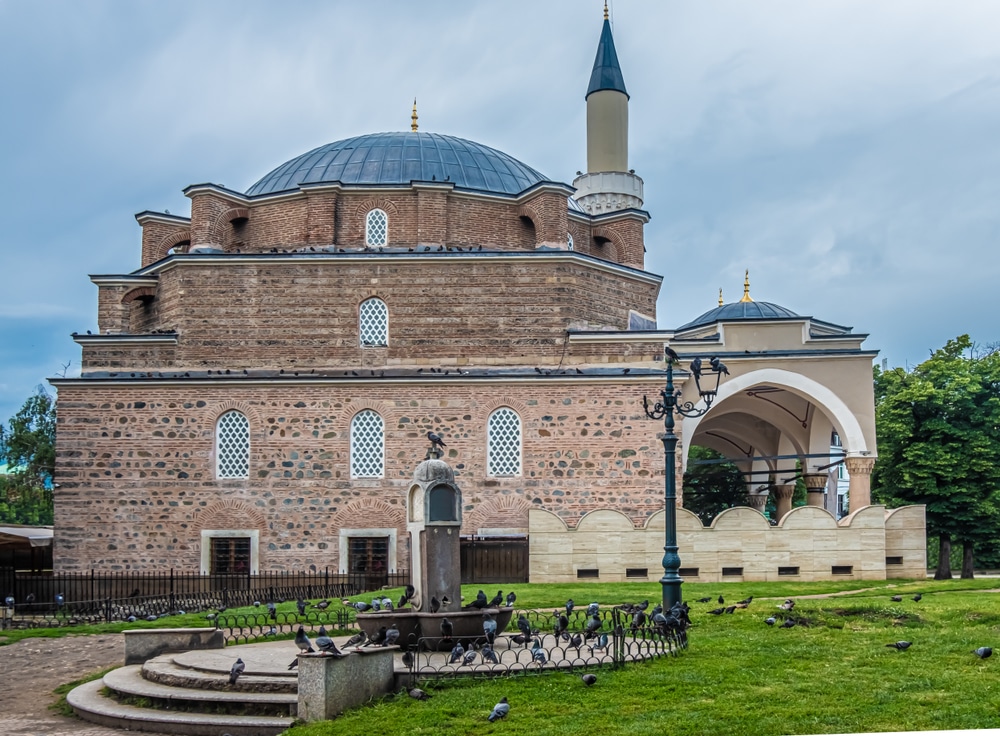 Source: LouieLea / shutterstock
Source: LouieLea / shutterstockUp to the 1870s Sofia had dozens of mosques serving a large Muslim population, but this dwindled on the back of the city’s liberation by the Russians in 1878. Now, the only functioning mosque can be found on Banski Square, with a congregation of around 700 on Fridays and 1,200 at Eid, far surpassing its capacity.
Reflecting Ottoman tastes in the 16th century, the Banya Bashi Mosque was ready in 1567 and is a sight to ponder, especially because of its proximity to the Sofia Synagogue and the cathedrals of St Joseph and St Kyriaki.
Take a while to appreciate the lead-clad dome, measuring 15 metres in diameter, as well as the fine minaret and the use of ablaq, alternating bands of stone and bricks in the external walls.
13. Sveta Petka
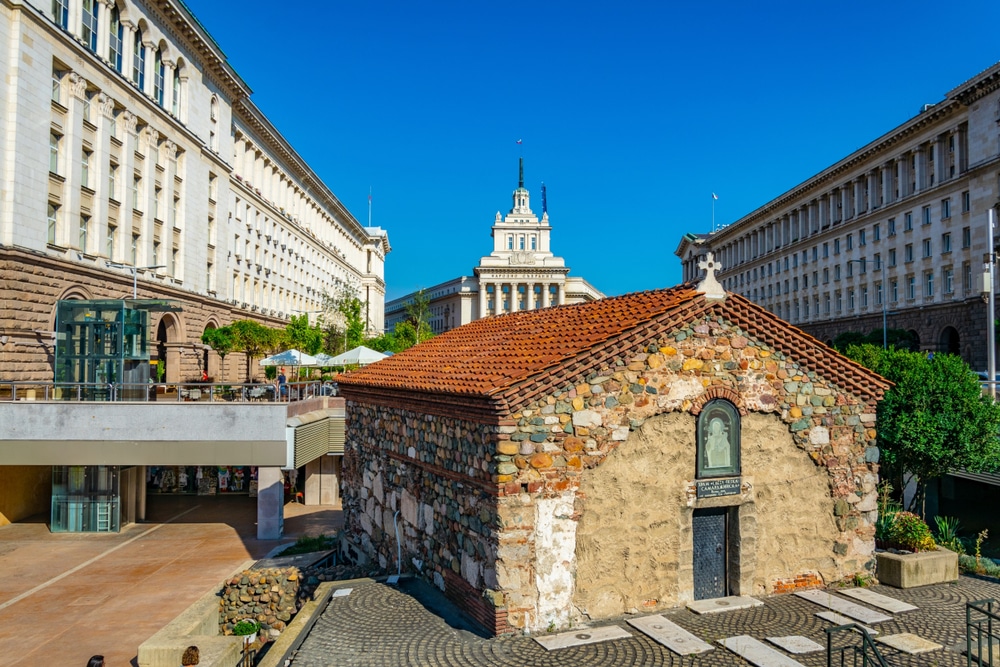 Source: trabantos / shutterstock
Source: trabantos / shutterstockNow, while this small Medieval church in the TZUM underpass may seem humble, especially against the backdrop of the Stalinist ensemble of the Largo, it carries a lot of importance.
The single-nave Church of St Petka of the Saddlers dates back to the 11th century and was likely built on top of a Roman temple, vestiges of which can be found in the crypt.
Within are layers of frescoes depicting scenes from the bible, the oldest painted in the 14th century and with newer images from the 15th to the 19th centuries.
One theory about the low height of the building comes from an Ottoman rule that non-Muslim places of worship could be no taller than a man on horseback.
Another popular rumour is that the remains of Bulgarian hero Vasil Levski are buried at Sveta Petka, and there’s a plaque next to the apse to recognise this.
14. National Art Gallery
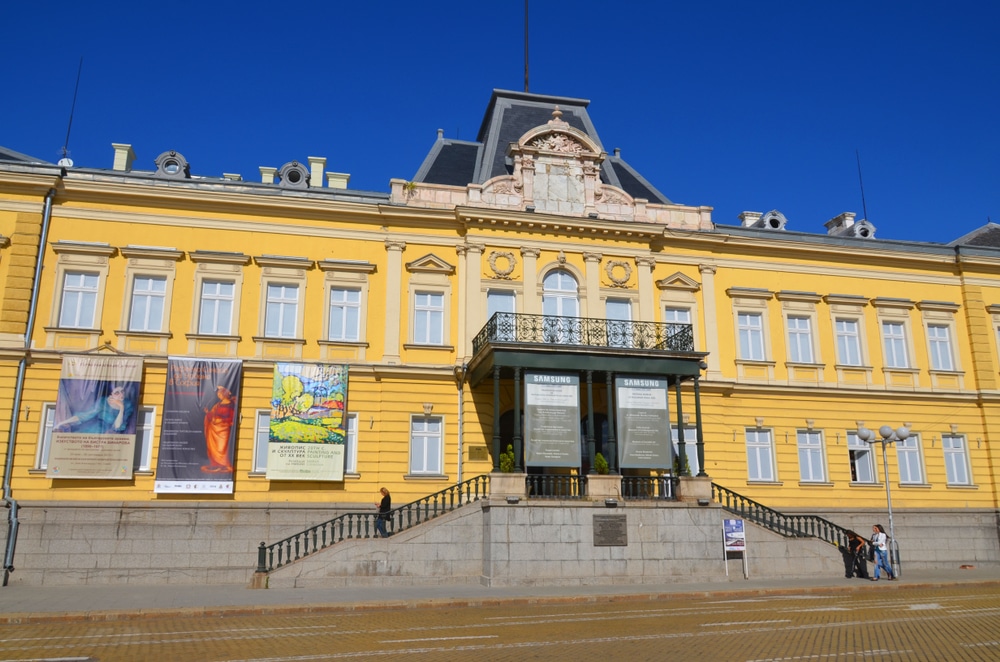 Source: meunierd / shutterstock
Source: meunierd / shutterstockThe chateauesque headquarters for Bulgaria’s national art museum await you on Battenberg Square, at the former royal palace.
This building has a compelling history, incorporating sections from the Ottoman Chelebi mosque and the konak (Ottoman official residence). There you can browse the gallery’s collections of Christian Art produced on Bulgarian soil between the 4th and 19th centuries.
Under the same umbrella is the National Gallery Kvadrat 500, at Alexander Nevsky Square and housed in the 19th-century Neoclassical former Royal Printing Office.
This houses the collections of Bulgarian art from the 19th and 20th centuries as well as extensive holdings of foreign art from around Europe, the Americas, Africa, India, Southeast Asia and Japan.
Website: https://nationalgallery.bg/
15. Russian Church
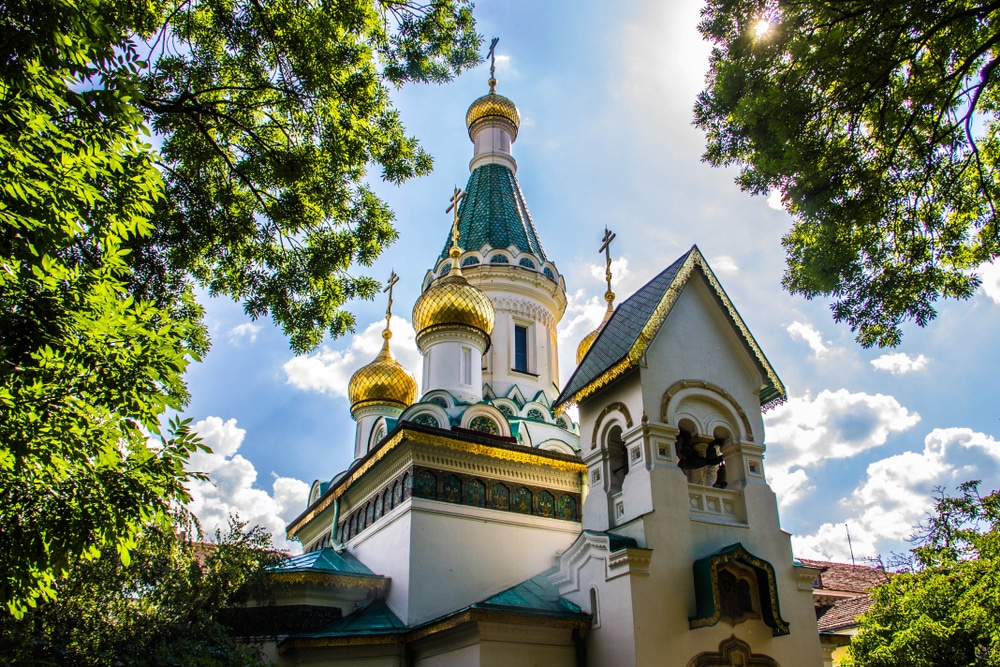 Source: Artemiy Belyaev / shutterstock
Source: Artemiy Belyaev / shutterstockIf you had to pick the most ostentatious church in Sofia, look no further than the Russian Church of St Nicholas the Miracle-Maker, consecrated in 1914. This was purpose-built as a place of worship for the Russian embassy, and has a significant location on the site of the Saray Mosque, destroyed in 1882. The Russian Church is impossible to overlook for its five gold onion domes and a roof clad with green majolica tiles.
The church bells were donated by none other than Tsar Nicholas II.
The profuse decoration outside contrasts with a more sober interior, but people flock to the church for the tomb of Archbishop Nikolai Borisovitch Sobolev (1881- 1950). He has recently been canonized as Saint Seraphim (Sobolev) for his many writings defending the Orthodox faith.
Website: http://podvorie-sofia.bg/
16. Earth and Man National Museum
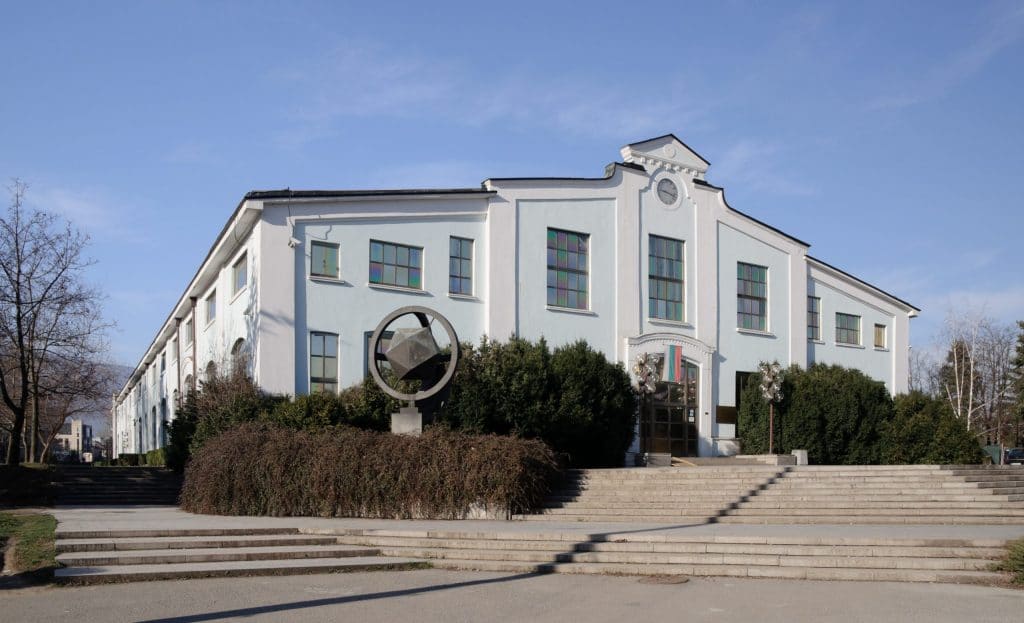 Source: MrPanyGoff / Wikimedia | CC0
Source: MrPanyGoff / Wikimedia | CC0Something for amateur geologists and mineralogists, this museum bordering South Park has one of the largest collections in its field in the world.
The museum opened in 1987 at a restored arsenal building completed in 1898 and has a collection made up of more than 37,000 specimens, including just under half of all minerals known to science.
As well as seeing remarkable minerals and precious stones, you’ll find out about their industrial applications and Bulgaria’s own natural resources.
The museum’s sections include “Precious and Ornamental Stones”, “Mineral Resources of the Earth”, “Mineral Resources of Bulgaria” and “Giant Crystals”, the latter featuring astounding specimens discovered in Brazil.
Website: http://www.earthandman.org/
17. National Palace of Culture
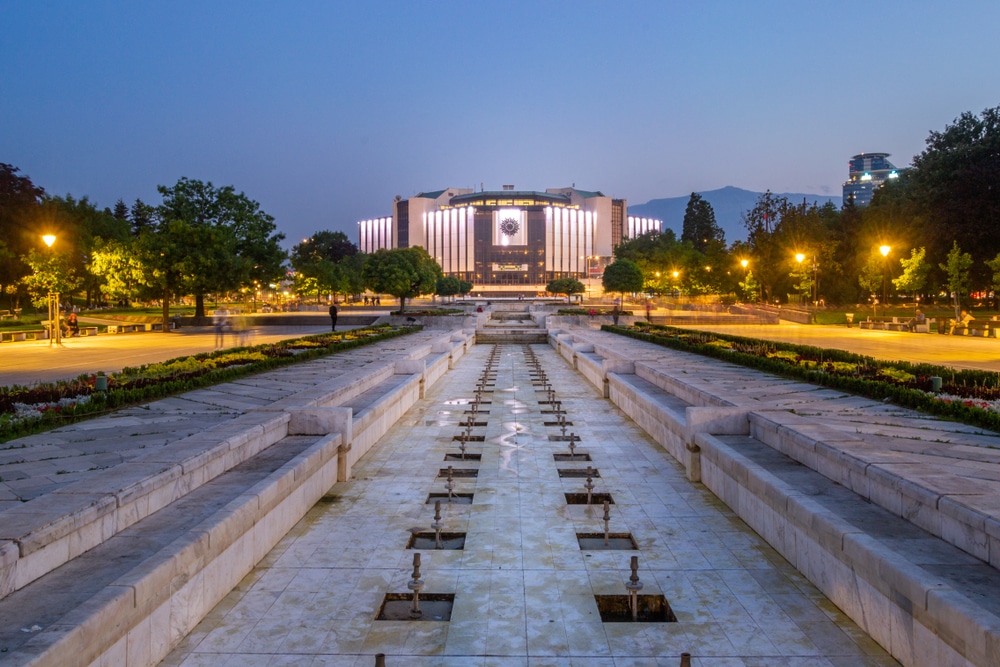 Source: tichr / shutterstock
Source: tichr / shutterstockReigning over the cityscape on the north bank of the Perlovska River is a whopping multifunctional exhibition and conference centre.
The National Palace of Culture is the largest building of its kind in south-eastern Europe, over eight storeys and with an area of 123,000 square metres.
The venue was unveiled in 1981 to mark 1,300 years of Bulgarian history.
Approaching from the city centre the vast hexagonal structure hoves into view along a grand walkway.
This is the stage for a heavy schedule of concerts, festivals, theatre, dance performances, fairs, conventions, conferences and symposia.
In fact there are 300 events at the National Palace of Culture in a typical year, and if there’s an artist doing an arena tour of Europe, chances are that they’ll have a date at the National Palace of Culture.
Some of the bigger names include the Vienna State Opera, the Bolshoi Theatre, The London Symphony Orchestra, James Brown, José Carreras and Andrea Bocelli, to name a small few.
On a typical day you could stop by just to sense the size of the building, visit the shopping arcade below and to see some of the 80 works of public art within.
Website: http://ndk.bg/
18. St Kyriaki Cathedral Church
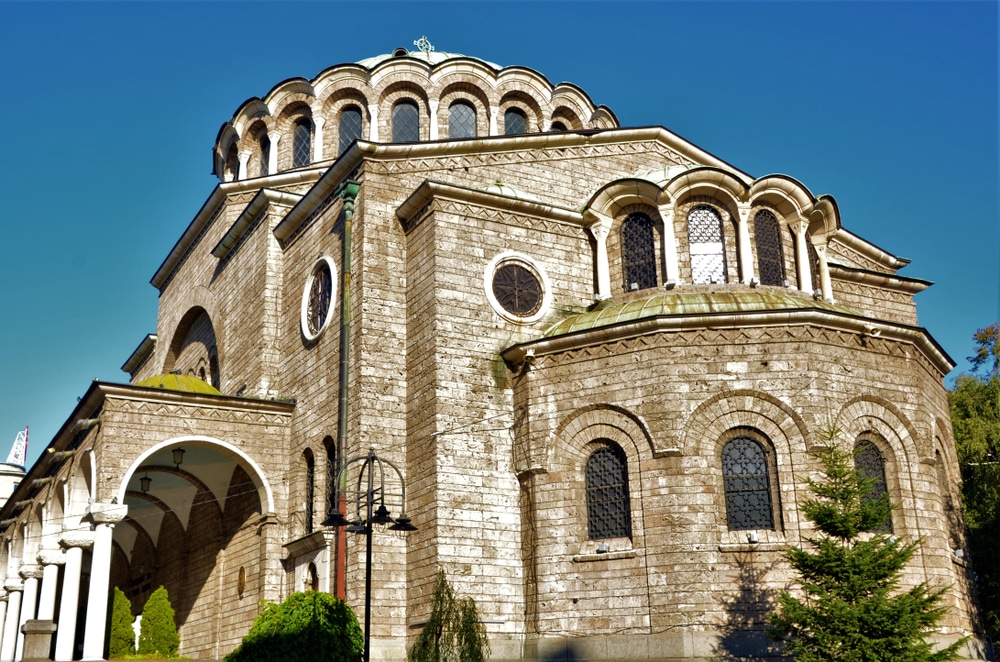 Source: alanf / shutterstock
Source: alanf / shutterstockAt the top of Vitosha Boulevard, and up there with Sofia’s most recognisable landmarks, St Kyriaki is a Byzantine Revival cathedral that has come through all sorts of upheaval since it was first consecrated in the 10th century.
There have been several rebuilds, the most recent taking place in the 1930s after an attack by the Bulgarian Communist Party in 1925 that left 200 dead.
The belfry is 19th-century and has a ring of 11 bells, eight of which were gifted to the church by the Russian Prince Alexander Mikhailovich Dondukov-Korsakov in 1879. The gilt iconostasis survived the attack and was produced by the prominent Bulgarian woodcarver, Anton Stanishev (1828-1904), with several icons painted by the feted artist Stanislav Dospevksi.
Website: http://www.sveta-nedelia.org/
19. National Museum of Military History
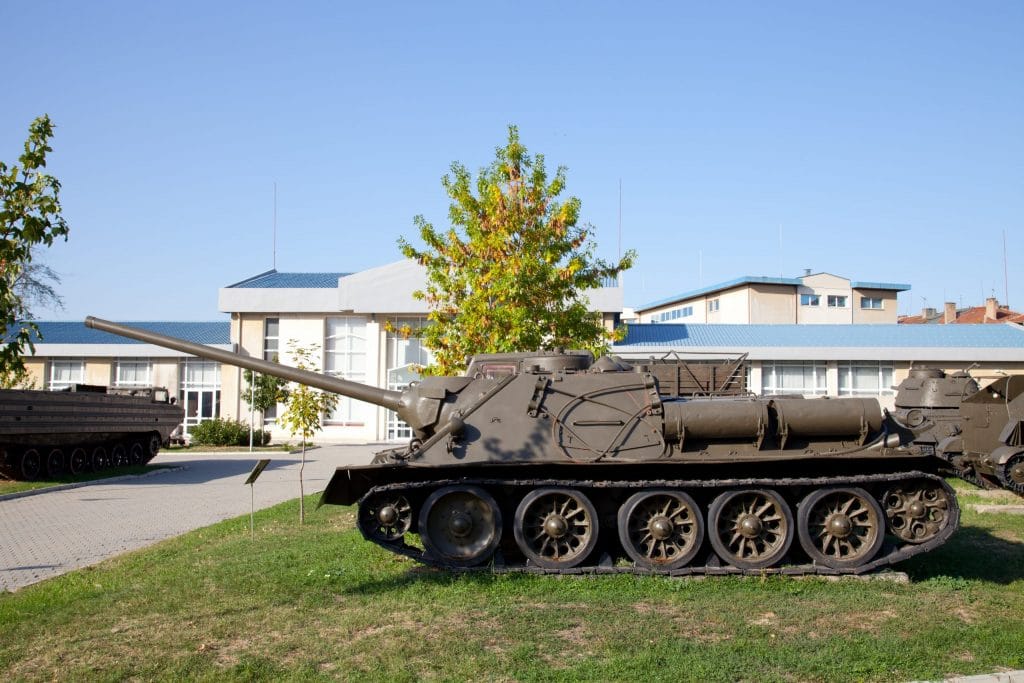 Source: commons.wikimedia.org | CC0
Source: commons.wikimedia.org | CC0This state museum has existed in some form since 1914, and over the last 100 years+ has amassed a collection of up to one million objects relating to Bulgarian and foreign military.
Across three floors you’ll get a complete chronology of warfare on Bulgarian soil beginning with the Thracians and bringing you right through to the 21st-century republic.
The museum does nothing by halves, and has a whole stockpile of mostly Soviet aircraft and armoured vehicles on its lawns.
Within you can cast your eye over heavy artillery, missiles, paintings, rifles, swords, uniforms, equipment packs and tons of medals.
Many of these belonged to the personal collections of Tsars Ferdinand I and Boris III.
In amongst all that militaria you’ll come across some amazing finds like an enigma machine.
Website: http://www.militarymuseum.bg/
20. Amphitheatre of Serdica
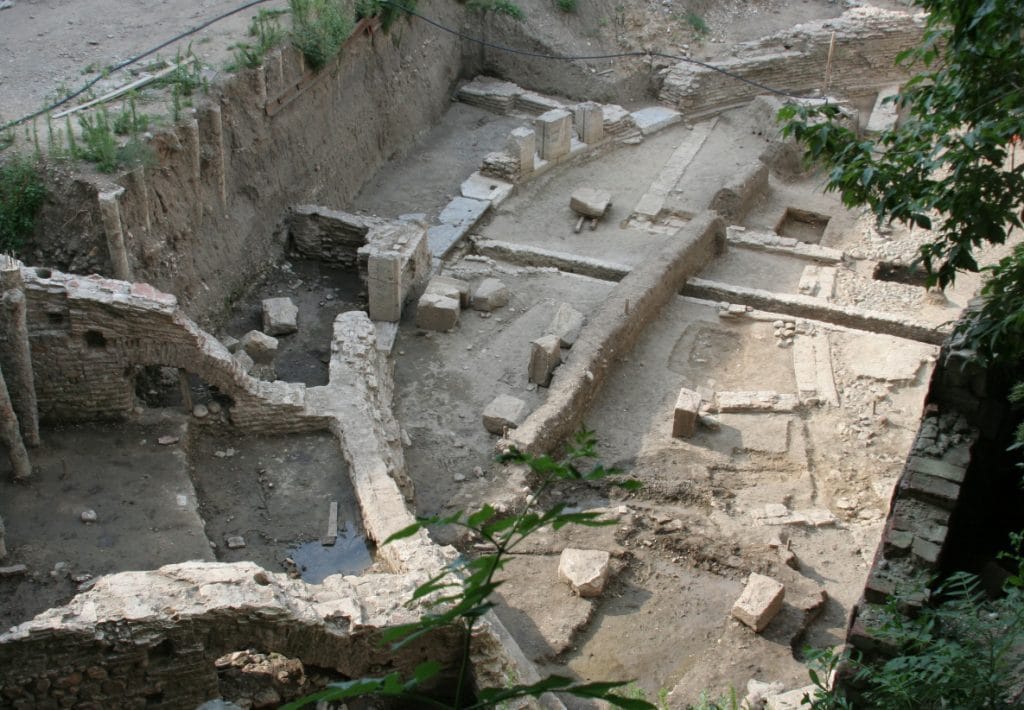 Source: Epaunov72 / Wikimedia | CC0
Source: Epaunov72 / Wikimedia | CC0Many of ancient Serdica’s monuments have been lost to time, but an exciting fragment came to light in 2004 with the discovery of an amphitheatre next to the Goethe-Institut.
This was built in the 3rd and 4th centuries on the foundations of an even earlier theatre.
In its time the amphitheatre was one of the largest in the eastern Roman Empire at, more than 60 metres long and 43 metres wide.
It was abandoned in the 5th century, later quarried for stone and finally excavated during the construction of the hotel that stands above.
The ruins, hinting at the size of that structure, lie in the basement and atrium, and can be visited for free.
Website: https://www.arenadiserdica.com/conferences-services/amphitheater-of-serdica-sofia
21. South Park
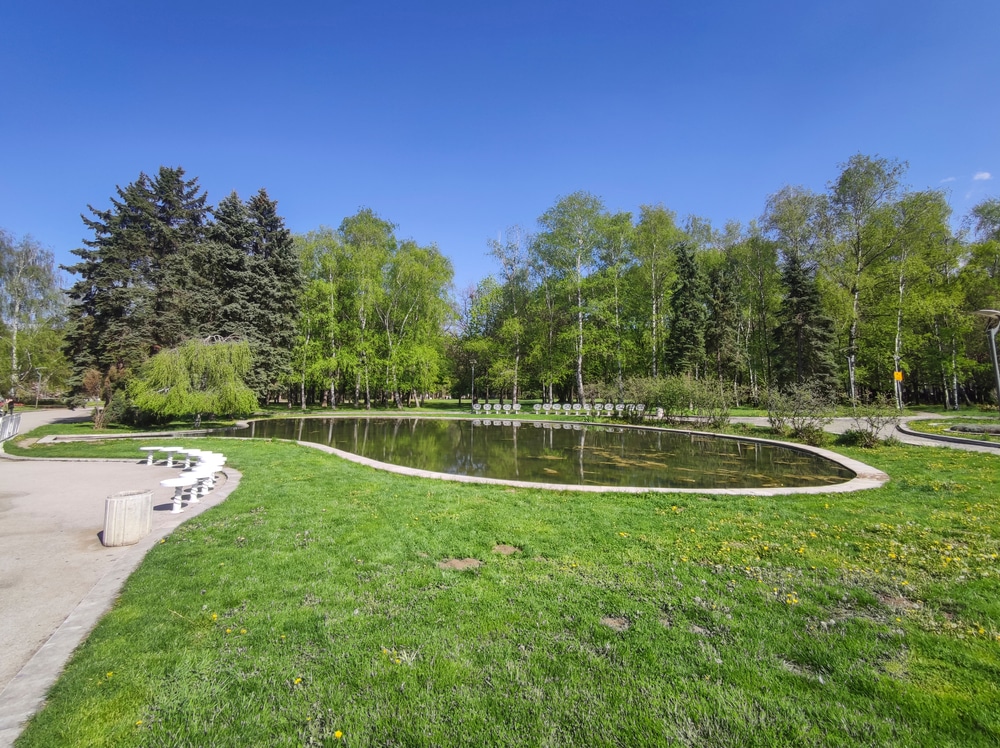 Source: stoyanh / shutterstock
Source: stoyanh / shutterstockFollow the Vitosha Boulevard to its southern end and you’ll arrive at a park that was laid out in the early-1970s.
South Park was envisioned as a kind of extension of Vitosha Mountain, and the park is in a green, bird-rich corridor leading from the heart of the city across the Perlovska via the grounds of the National Palace of Culture.
You’ll get some fantastic views of the mountain from South Park, and, as if to mimic the vegetation on the mountain’s slopes, there’s some dense forest mingling with a chain of ponds and fountains.
The leafy alleys are a magnet for walkers and cyclists, and you’ll find plenty of playgrounds for children and cafes if you need a pick-me-up.
South Park has always been a location for summer events, led by “Flower for Gosho”, a festival in memory of rock musician Georgi Minchev at the start of the season.
22. Dragalevtsi Monastery
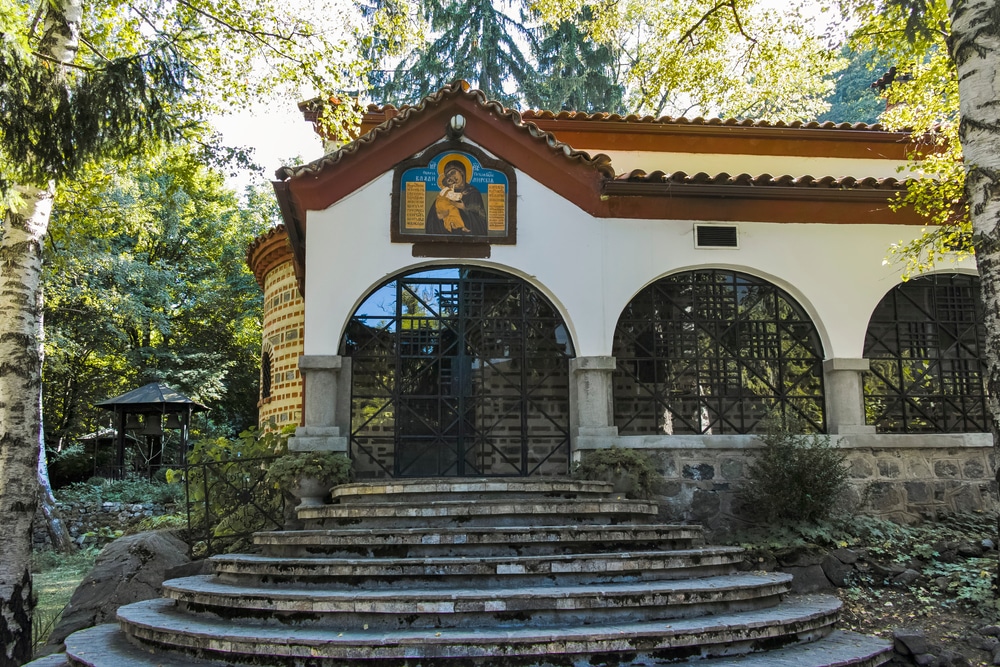 Source: hdesislava / shutterstock
Source: hdesislava / shutterstockOn Vitosha Mountain’s lower slopes stands a monastery founded in 1345 in the reign of Tsar Ivan Alexander and inhabited today by a community of nuns.
Dragalevtsi Monastery has a special place in the nation’s heart, partly because Vasil Levski and other revolutionaries stayed here several times in the 1870s.
The story of Dragalevtsi Monastery was interrupted by the Ottoman conquest of 1382, but the site was revived in the second half of the 15th century as the home for the Sofia Literary School, becoming a sort of repository for Bulgarian cultural records.
Much of the church architecture is from that time, and this building is decorated with external frescoes of warrior saints from the 17th-century, and interior mural images of the patron Radoslav Mavar from when he revived the monastery in the 1400s.
The iconostasis was carved by Sofia masters in the 18th century, with icons by the 19th-century Samokov School painter, Nikola Obrazopisov.
23. Ivan Vazov National Theatre
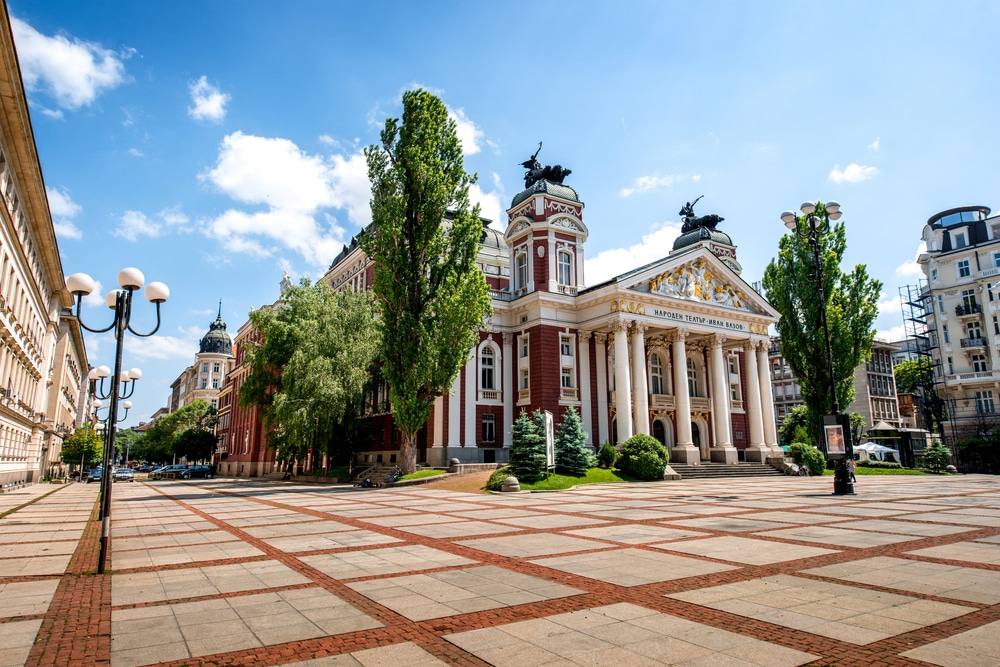 Source: RossHelen / shutterstock
Source: RossHelen / shutterstockThe largest, oldest and most prestigious theatre in Bulgaria faces Sofia’s historic City Garden.
The venue, inaugurated in 1907, is one of a catalogue of imposing theatres and opera houses designed by the Viennese team of Hermann Helmer and Ferdinand Fellner.
On the facade is a Neoclassical pediment held up by Ionic columns and with a frieze depicting Apollo and the muses in the tympanum.
As a monument, the Ivan Vazov National Theatre warrants a flying visit.
If you’d like to catch a performance the theatre employs Bulgaria’s most prominent stage actors, with a repertoire of classical and contemporary titles.
There may be a language barrier, but you can always admire the profuse ornamentation of the auditorium’s ceiling and walls by Viennese designer Rudolf Fuchs.
The stage curtain meanwhile was woven by women from southern Bulgaria, to a design from Stravinsky’s 1910 ballet, The Firebird.
Website: https://nationaltheatre.bg/
24. Vrana Palace
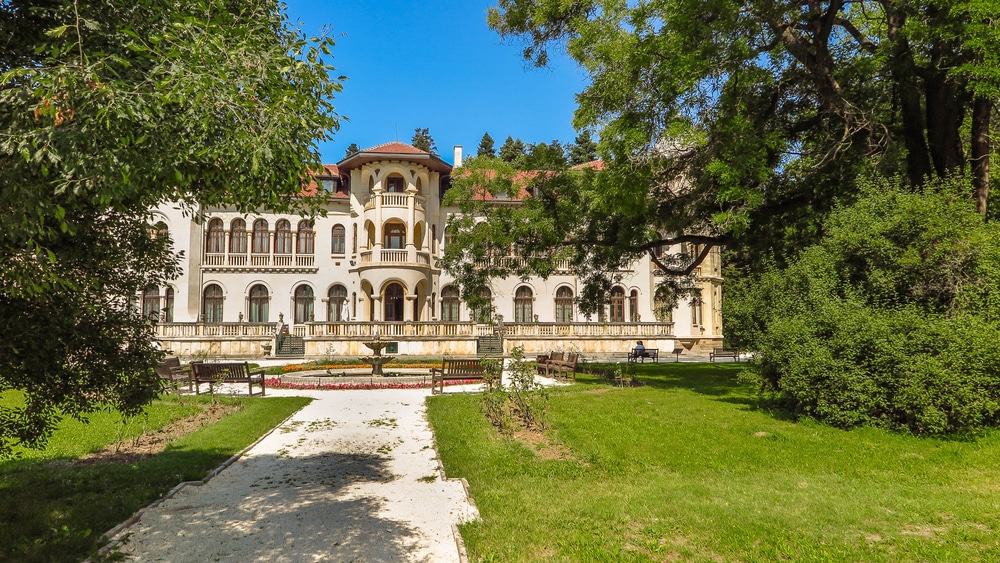 Source: Boyan Georgiev Georgiev / shutterstock
Source: Boyan Georgiev Georgiev / shutterstockYou can make the trip out to this royal palace, couched in expansive parkland and opening up for guided tours on weekends.
Vrana Palace was ordered by Tsar Ferdinand I, who hired the noted architect Nikola Lazarov.
The building was completed in 1914 in a style known as Plovdiv Baroque, but with Viennese, Venetian, Art Nouveau and Byzantine influences.
The interiors are sumptuous and need to be seen for their Carrara columns, delftware tiles, oak wainscoting and ornately carved wooden ceilings.
A real highlight is the Karelian Hall, in which all of the furnishings are carved from Karelian birch by Russian artisans sent over as a gift from Tsar Alexander III of Russia.
Out in the grounds are lakes, rockeries, greenhouses and a small farm.
Tsar Ferdinand I was a passionate botanist and oversaw the landscaping of the estate, which continues to grow more than 800 distinct plant species.
Since the fall of the communist regime, Vrana Palace has been occupied by Bulgaria’s last monarch, Simeon Saxe-Coburg-Gotha, who served as Bulgaria’s 48th prime minister in the 2000s.
25. Boyana Waterfall
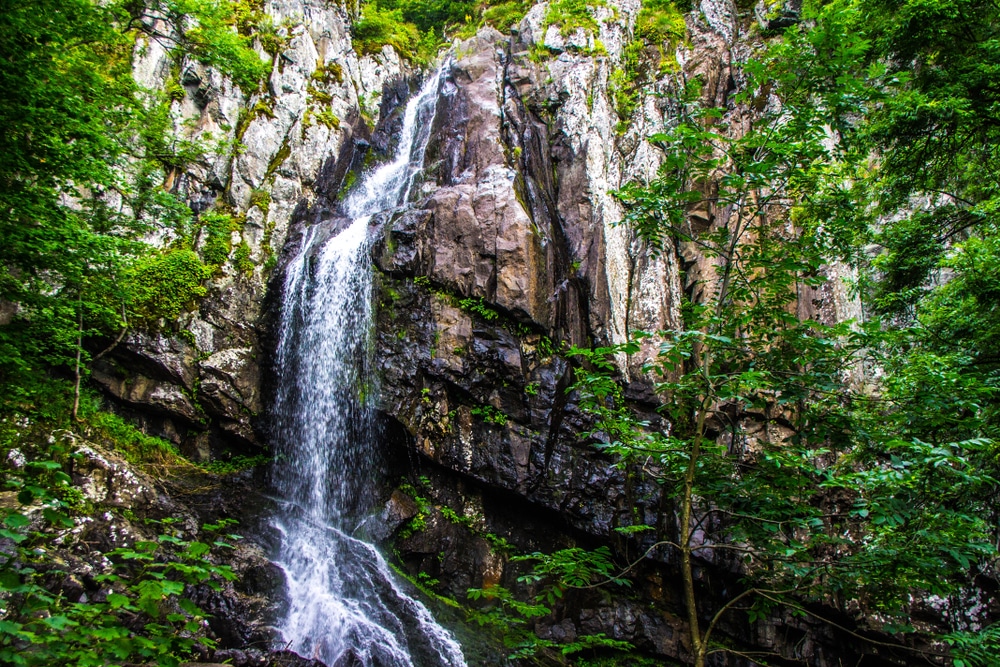 Source: Artemiy Belyaev / shutterstock
Source: Artemiy Belyaev / shutterstockNo trip to Vitosha Mountain is complete without a diversion to this waterfall, reached via the Boyana neighbourhood.
You can get there in around 30 minutes by car, or take the metro to Vitosha station near South Park and then hop on a 64 bus.
Setting off from Boyana Church it’s a challenging climb, and you’ll have the option of a longer and lighter trail or a shorter and steeper one.
Every so often you can pause and turn around for an invigorating view of the city.
The route is well signposted and before long you’ll be greeted by the sight of a slender ribbon of water tumbling into a rocky gorge.
Try to pick a dry day to make the trek as the rocks on the way up are slippery in wet weather.
Also keep one eye on the ground as there’s a large number of salamanders on these slopes, with vivid black and yellow markings.